Themed collection Journal of Materials Chemistry B Emerging Investigators

Contributors to the Emerging Investigators 2022 issue
Journal of Materials Chemistry B profiles contributors to the Emerging Investigators issue.

J. Mater. Chem. B, 2022,10, 7080-7088
https://doi.org/10.1039/D2TB90128E
Engineering microbes to synthesize functionalized biopolymers
Engineering the metabolism of microbes has allowed simultaneous co-production of functional small molecules and biopolymers.

J. Mater. Chem. B, 2022,10, 7132-7135
https://doi.org/10.1039/D2TB01063A
Chemical and molecular tools to probe biological sex differences at multiple length scales
Sex differences in biology are observed at multiple different length scales and across organ systems.

J. Mater. Chem. B, 2022,10, 7089-7098
https://doi.org/10.1039/D2TB00871H
Fluidic enabled bioelectronic implants: opportunities and challenges
Fluidics are enabling new possibilities in bioelectronic medicine and research.

J. Mater. Chem. B, 2022,10, 7122-7131
https://doi.org/10.1039/D2TB00942K
The importance of water content on the conductivity of biomaterials and bioelectronic devices
Water content derived from the environment is as an important a variable as temperature for affecting the conductivity and for understanding the charge transport mechanisms within conductive biomaterials as well as bioelectronic devices.
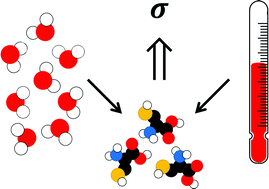
J. Mater. Chem. B, 2022,10, 7108-7121
https://doi.org/10.1039/D2TB00593J
Active nanomotors surpass passive nanomedicines: current progress and challenges
We summarise the superiorities of nanomotors over traditional nanomedicines, state-of-the-art applications and current challenges of using nanomotors in the biomedical field.

J. Mater. Chem. B, 2022,10, 7099-7107
https://doi.org/10.1039/D2TB00556E
Modulating liquid–liquid phase separation of FUS: mechanisms and strategies
This review summarizes the regulations of liquid–liquid phase separation involving fused in sarcoma protein (FUS) by physical stimuli, biochemical modulators and protein structural modifications.

J. Mater. Chem. B, 2022,10, 8616-8628
https://doi.org/10.1039/D2TB01688E
Nanomaterial integrated 3D printing for biomedical applications
Herein, recent advances in nanomaterials integrated with 3D printing technologies are summarized to inform the reader about the cutting-edge technology in the development of advanced 3D-printed structures for biomedical applications.
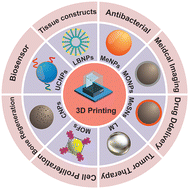
J. Mater. Chem. B, 2022,10, 7473-7490
https://doi.org/10.1039/D2TB00931E
Nucleic acid paranemic structures: a promising building block for functional nanomaterials in biomedical and bionanotechnological applications
This review highlights the PX-based DNA nanostructures in biological systems, dynamic systems, and biomedical contexts.

J. Mater. Chem. B, 2022,10, 7460-7472
https://doi.org/10.1039/D2TB00605G
Emerging approaches for preventing cytokine release syndrome in CAR-T cell therapy
Strategies for reducing CRS in CAR-T cells capitalize on the specificity between CAR-T cells, cytokines, and their receptors, the role of macrophages in cytokine release, and genetic constructs to ablate CAR-T function reversibly and irreversibly.

J. Mater. Chem. B, 2022,10, 7491-7511
https://doi.org/10.1039/D2TB00592A
Recent advances in nanotechnology mediated mitochondria-targeted imaging
Mitochondria play a critical role in cell growth and metabolism.
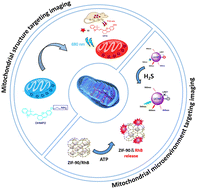
J. Mater. Chem. B, 2022,10, 7450-7459
https://doi.org/10.1039/D2TB00935H
Molecularly imprinted polymers in diagnostics: accessing analytes in biofluids
Bio-applied molecularly imprinted polymers (MIPs) are biomimetic materials with tailor-made synthetic recognition sites, mimicking biological counterparts known for their sensitive and selective analyte detection.

J. Mater. Chem. B, 2022,10, 7418-7449
https://doi.org/10.1039/D2TB00703G
Emerging nanobiotechnology-encoded relaxation tuning establishes new MRI modes to localize, monitor and predict diseases
Tumor microenvironment-activated longitudinal or transverse relaxation tuning shows highly promising applications. Smart MRI contrast agents exhibit high potential for tracking cancer progression and evolution and monitoring treatment process.
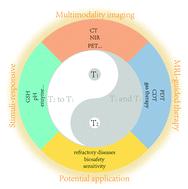
J. Mater. Chem. B, 2022,10, 7361-7383
https://doi.org/10.1039/D2TB00600F
Recent advances in biomedical applications of bacterial outer membrane vesicles
This review comprehensively covers the extraction, characterization, functionalization and biomedical applications of bacterial outer membrane vesicles (OMVs).
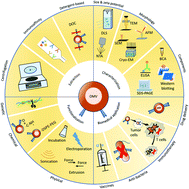
J. Mater. Chem. B, 2022,10, 7384-7396
https://doi.org/10.1039/D2TB00683A
Latest on biomaterial-based therapies for topical treatment of psoriasis
Biomaterials demonstrate great potential in the treatment of psoriasis.
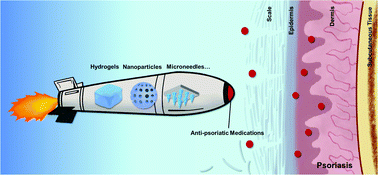
J. Mater. Chem. B, 2022,10, 7397-7417
https://doi.org/10.1039/D2TB00614F
Design of hydrogel-based wearable EEG electrodes for medical applications
We are in the evolution of continuous monitoring of neural activity with non-invasive wearable EEGs. The development of hydrogel electrodes technology is important for home-use systems for long-term EEG monitoring and diagnostics of disease.
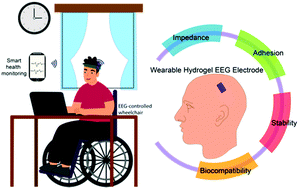
J. Mater. Chem. B, 2022,10, 7260-7280
https://doi.org/10.1039/D2TB00618A
Recent progress of nanomedicine in secreted phospholipase A2 as a potential therapeutic target
This paper systematically reviews recent studies on nanomedicines targeting sPLA2 overexpression in many inflammatory diseases and various types of cancer during the past few years.
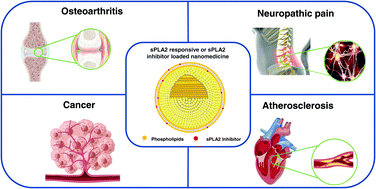
J. Mater. Chem. B, 2022,10, 7349-7360
https://doi.org/10.1039/D2TB00608A
Chitosan-based oral colon-specific delivery systems for polyphenols: recent advances and emerging trends
Chitosan has been widely used to assemble different types of oral colon-targeted delivery systems, which attract great attention in the delivery of polyphenols to the colon for the treatment of colon and non-colon diseases.
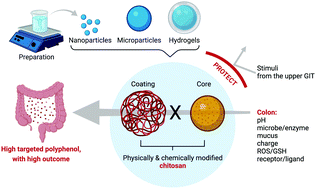
J. Mater. Chem. B, 2022,10, 7328-7348
https://doi.org/10.1039/D2TB00874B
Conjugated polymer-based luminescent probes for ratiometric detection of biomolecules
We summarize the recent research progress concerning conjugated polymer-based luminescent probes for ratiometric detection of biomolecules.
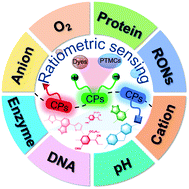
J. Mater. Chem. B, 2022,10, 7309-7327
https://doi.org/10.1039/D2TB00937D
Cell membrane-engineered nanoparticles for cancer therapy
This review mainly summarizes the research progress of cell membrane extraction and coating technology, with an emphasis on the treatment of cancer with cell membrane-engineered nanoparticles from various sources.

J. Mater. Chem. B, 2022,10, 7161-7172
https://doi.org/10.1039/D2TB00709F
Recent advances in biomaterial-assisted cell therapy
This review summarizes the recent research progress in various cell therapies and surveys the biomaterials developed to assist cell-based therapeutics for wide applications in diverse disease treatments.

J. Mater. Chem. B, 2022,10, 7222-7238
https://doi.org/10.1039/D2TB00583B
Hemostatic biomaterials to halt non-compressible hemorrhage
This review covers the design principles of hemostatic biomaterials based on biochemical and mechanical mechanisms, and discusses the remaining challenges and immediate opportunities to manage non-compressible hemorrhage with biomaterials.

J. Mater. Chem. B, 2022,10, 7239-7259
https://doi.org/10.1039/D2TB00546H
Rational construction of polycystine-based nanoparticles for biomedical applications
This review summarizes the development of reduction-responsive disulfide-crosslinked PCys2-based nanoparticles through one-pot polymerization, post-polymerization modification, and post-polymerization self-assembly for biomedical applications.
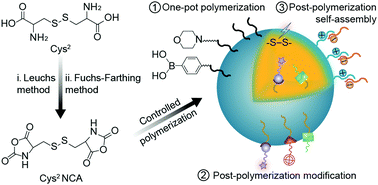
J. Mater. Chem. B, 2022,10, 7173-7182
https://doi.org/10.1039/D2TB00581F
Electrospun nanofibers for manipulating soft tissue regeneration
By integrating multiple types of guidance cues, electrospun nanofiber scaffolds can be used to manipulate cell behaviors and thus facilitate soft tissue regeneration, including nerves, skin, heart, blood vessels, and cornea.
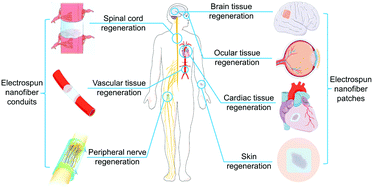
J. Mater. Chem. B, 2022,10, 7281-7308
https://doi.org/10.1039/D2TB00609J
Thioether-based ROS responsive polymers for biomedical applications
Thioether-based reactive oxygen species (ROS) responsive polymers and polypeptides, with the ability to self-assemble in aqueous media and disassemble or being transformed in the presence of ROS, are ideal candidates for target biomedical therapies.
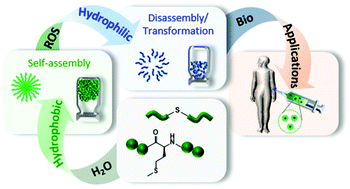
J. Mater. Chem. B, 2022,10, 7206-7221
https://doi.org/10.1039/D2TB00615D
Magnetomechanical force: an emerging paradigm for therapeutic applications
Magnetomechanical force for therapeutic applications.

J. Mater. Chem. B, 2022,10, 7136-7147
https://doi.org/10.1039/D2TB00428C
Bioactive hydrogels based on polysaccharides and peptides for soft tissue wound management
This review provides the recent progress, intrinsic interactions between structures and bioactive performances, current limitations and future directions of bioactive hydrogels based on polysaccharides and peptides for soft tissue wound management.
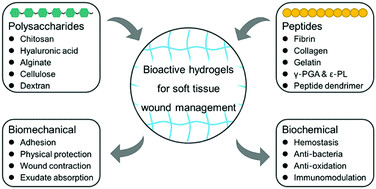
J. Mater. Chem. B, 2022,10, 7148-7160
https://doi.org/10.1039/D2TB00591C
Biofunctionalized metal–organic frameworks and host–guest interactions for advanced biomedical applications
With highly favorable properties such as enormous internal surface areas, high porosity and large flexibility, metal–organic frameworks (MOFs) have emerged as promising materials for applications such as gas storage and separation, catalysis, wastewater filtration, etc.

J. Mater. Chem. B, 2022,10, 7194-7205
https://doi.org/10.1039/D2TB00459C
Supramolecular biomaterials for enhanced cancer immunotherapy
Supramolecular self-assembly offers the possibility for modulating nanostructures and reprogramming immunological properties, paving the way for enhanced cancer immunotherapy.
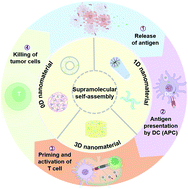
J. Mater. Chem. B, 2022,10, 7183-7193
https://doi.org/10.1039/D2TB00048B
Membrane-fusogenic biomimetic particles: a new bioengineering tool learned from nature
This review aims to highlight the recent advances, key limitations, and future directions of membrane-fusogenic biomimetic particles for biomedical applications.
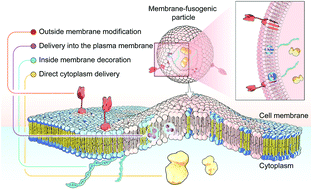
J. Mater. Chem. B, 2022,10, 6841-6858
https://doi.org/10.1039/D2TB00632D
Recent advances in flexible and wearable chemo- and bio-sensors based on two-dimensional transition metal carbides and nitrides (MXenes)
Due to their excellent hydrophilicity, outstanding conductivity, unique structures, and physicochemical properties, MXenes have become a potential candidate material for flexible and wearable chemo- and bio-sensors.

J. Mater. Chem. B, 2022,10, 2113-2125
https://doi.org/10.1039/D1TB02759J
Nanoscale patterning of polymers on DNA origami
Structurally precise biohybrid nanomaterials were created by grafting various polymers to DNA with high conversions under ambient conditions. They are patterned onto DNA origami nanostructures to form customizable surface contours.

J. Mater. Chem. B, 2022,10, 7512-7517
https://doi.org/10.1039/D2TB00812B
Chiral amino acid modified boron-dipyrromethene nanoparticles with different photodynamic activities
Nanoparticles from BODIPY photosensitizers decorated with chiral amino acids have been prepared and exhibit different photodynamic activities.

J. Mater. Chem. B, 2023,11, 6853-6858
https://doi.org/10.1039/D3TB00684K
Degradable silk-based soft actuators with magnetic responsiveness
Soft actuators with stimuli-responsiveness have great potential in biomedical applications such as drug delivery and minimally invasive surgery.

J. Mater. Chem. B, 2022,10, 7650-7660
https://doi.org/10.1039/D2TB01328B
Cationic lipopolymeric nanoplexes containing the CRISPR/Cas9 ribonucleoprotein for genome surgery
sgRNA/Cas9 ribonucleoproteins (RNPs) provide a site-specific robust gene-editing.

J. Mater. Chem. B, 2022,10, 7634-7649
https://doi.org/10.1039/D2TB00645F
A Cu-based nanoplatform for near-infrared light amplified multi-mode prostate cancer specific therapy
We report that Cu-MNCS-AIPH@PAA with high biocompatibility can be used for highly efficient therapy of PCa through the cooperative effect of PTT, CDT, and alkyl radical generation triggered by the photothermal effect.
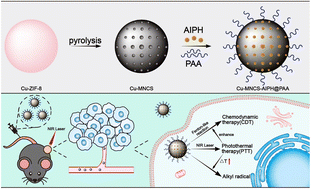
J. Mater. Chem. B, 2022,10, 7628-7633
https://doi.org/10.1039/D2TB01109C
Photovoltaic molecules with ultra-high light energy utilization for near-infrared laser triggered synergetic photodynamic and photothermal therapy
The obtained IEICO NPs possess a high 1O2 quantum yield (11%) and PCE (85.4%) with an ultra-high light energy utilization efficacy of 96.4%, and therefore can be applied for near-infrared laser triggered synergetic photodynamic and photothermal therapy.
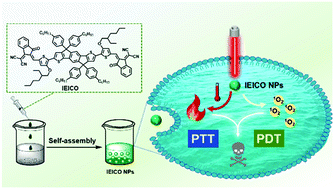
J. Mater. Chem. B, 2022,10, 7622-7627
https://doi.org/10.1039/D2TB00984F
Biosafety evaluation of dual-responsive neutrobots
Neutrobots carrying antitumor drugs facilitate considerable safety in vivo upon intravenous administration with high dose.

J. Mater. Chem. B, 2022,10, 7556-7562
https://doi.org/10.1039/D2TB00938B
Protein precoating modulates biomolecular coronas and nanocapsule–immune cell interactions in human blood
We demonstrate the effects of protein precoating on biomolecular corona formation and immune cell interactions of metal–phenolic network nanocapsules using proteomics analyses and human blood assays.

J. Mater. Chem. B, 2022,10, 7607-7621
https://doi.org/10.1039/D2TB00672C
Metal-phenolic networks as tuneable spore coat mimetics
Bacillus subtilis are probiotic microbes that are difficult to formulate when they are not in their spore form. Using self-assembling coatings, these cells were successfully protected during the freeze-drying process.

J. Mater. Chem. B, 2022,10, 7600-7606
https://doi.org/10.1039/D2TB00717G
A polymer-based chemical tongue for the non-invasive monitoring of osteogenic stem-cell differentiation by pattern recognition of serum-supplemented spent media
A biomimetic ‘chemical-tongue’ combining polymeric probes with pattern-recognition techniques is presented, which can generate fluorescence-response patterns from serum-supplemented culture media to non-invasively monitor stem cell differentiation.
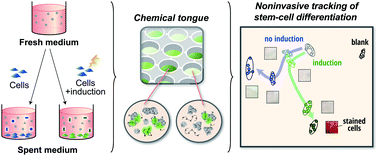
J. Mater. Chem. B, 2022,10, 7581-7590
https://doi.org/10.1039/D2TB00606E
Repurposing pinacol esters of boronic acids for tuning viscoelastic properties of glucose-responsive polymer hydrogels: effects on insulin release kinetics
Injectable hydrogels capable of releasing the desired amount of insulin under hyperglycemic conditions will significantly advance smart insulin development. We report glucose-responsive hydrogels with programmable insulin release properties.

J. Mater. Chem. B, 2022,10, 7591-7599
https://doi.org/10.1039/D2TB00603K
A multi-functional SiO32−-releasing hydrogel with bioinspired mechanical properties and biodegradability for vascularized skeletal muscle regeneration
A SiO32−-releasing hydrogel (SRH) demonstrates multiple functions for skeletal muscle regeneration. The SRH with bioinspired biodegradation behavior enhances vascularized muscle regeneration.

J. Mater. Chem. B, 2022,10, 7540-7555
https://doi.org/10.1039/D2TB00388K
An antioxidant nanodrug protects against hepatic ischemia–reperfusion injury by attenuating oxidative stress and inflammation
CeO2 and MnO2 nanocomposites, with advantages of high biocompatibility, passive liver-targeting and short-term metabolic excretion, have the capacity to scavenge ROS and regulate the inflammation to alleviate hepatic ischemia–reperfusion injury.
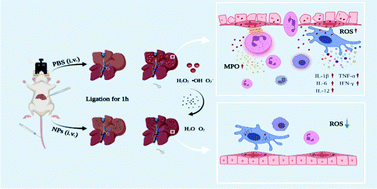
J. Mater. Chem. B, 2022,10, 7563-7569
https://doi.org/10.1039/D1TB02689E
Carboxy-functionalized pH responsive capsule polymer particles fabricated by particulate interfacial photocrosslinking
Carboxy-functionalized capsule polymer particles possessing neutral-alkali pH responsive controlled release capability were newly fabricated by interfacial photocrosslinking of spherical photoreactive polymer particles.

J. Mater. Chem. B, 2022,10, 7570-7580
https://doi.org/10.1039/D1TB02866A
Multi-layered stimuli responsive DNA micelles for the stepwise controlled release of small molecules
DNA functionalized Multi layered Surface Crosslinked Micelles (mlSCMs) can compartmentalize two small molecule cargo in distinct layers. In response to the appropriate trigger, mlSCMs can release cargo for chemical and biochemical applications.

J. Mater. Chem. B, 2022,10, 7518-7526
https://doi.org/10.1039/D1TB02722K
Illuminating the biochemical interaction of antimicrobial few-layer black phosphorus with microbial cells using synchrotron macro-ATR-FTIR
Black phosphorus (BP) nanoflakes have shown high antimicrobial activity. The interaction of microbial cells and black phosphorus nanoflakes was investigated using microscopic techniques and synchrotron source ATR-FTIR spectroscopy.
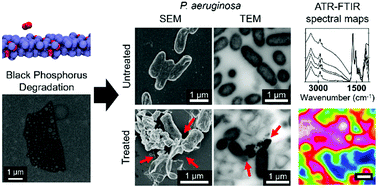
J. Mater. Chem. B, 2022,10, 7527-7539
https://doi.org/10.1039/D1TB02575A
About this collection
Journal of Materials Chemistry B is pleased to present this themed issue highlighting the rising stars of materials chemistry research in 2022. This issue showcases the very best work from materials chemists in the early stages of their independent career.
Each contributor was recommended by experts in their fields as carrying out work with the potential to influence future directions in materials chemistry with applications in biology and medicine. Congratulations to all the outstanding researchers featured.
See also: